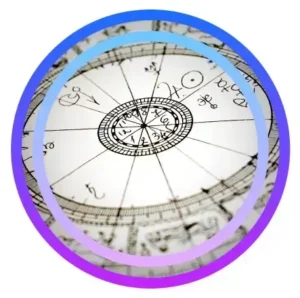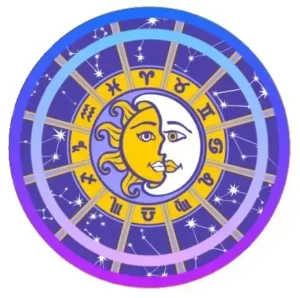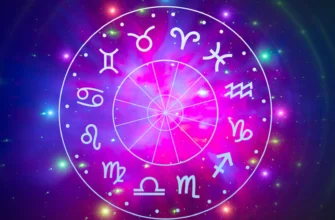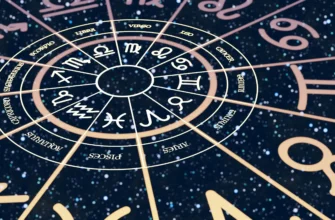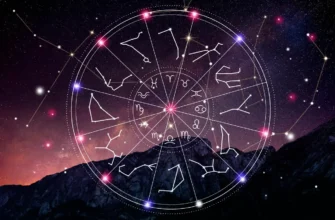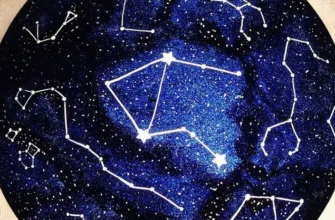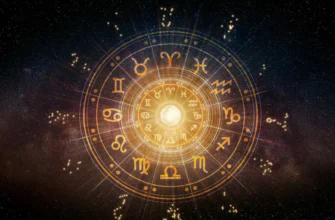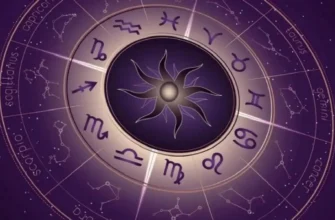The Sun–Moon connection is one of the clearest indicators of emotional harmony in birth chart compatibility. When one partner’s Sun touches the other’s Moon, the relationship feels natural, intuitive, and emotionally resonant. In relationship synastry, the Sun person brings vitality, direction, and identity, while the Moon person offers emotional depth, nurturing, and instinctive understanding. Together, they create the classic yin-yang dynamic—one that forms the emotional foundation of many long-lasting partnerships. Through synastry chart analysis, Sun–Moon aspects reveal how two people support each other’s individuality while creating shared emotional comfort.
This aspect often explains why some couples feel instantly at home with one another, or why emotional communication flows effortlessly. In synastry chart meaning, harmonious aspects highlight compatibility, while challenging ones reveal where partners’ needs may clash. Still, even tense aspects bring passion and growth. Sun–Moon synastry remains one of the strongest indicators of soulmate-like connection, emotional bonding, and long-term relationship potential.
Understanding Sun and Moon connections in synastry astrology forms the cornerstone of relationship compatibility analysis. These two luminaries represent the masculine and feminine principles within every individual – the conscious self (Sun) and the emotional nature (Moon) – creating the fundamental polarity that defines human personality. When comparing two birth charts for romantic compatibility, the Sun-Moon interaspects reveal whether two people can genuinely identify with each other’s core essence and navigate daily life together harmoniously.
While other planetary connections matter for specific relationship dynamics, such as Mercury for communication or Venus for romantic attraction, the Sun and Moon aspects determine whether partners can sustain long-term intimacy and shared domestic life. Relationship astrology prioritizes these luminaries because they illuminate the deepest compatibility factors that either support or undermine lasting partnership bonds.
The Essential Nature of Sun-Moon Compatibility
The Sun and Moon function as inseparable counterparts in astrological analysis, representing the positive and negative poles of human nature. The Sun symbolizes conscious identity, life purpose, vitality, and how individuals express their fundamental essence. The Moon governs emotional responses, instinctual reactions, subconscious patterns, and the capacity for nurturing and receiving care. Together, these luminaries create the complete picture of personality – the outer self that shines into the world and the inner emotional landscape that processes experience.
When assessing compatibility in synastry, astrologers examine how one person’s Sun and Moon interact with their partner’s luminaries. These connections reveal whether two individuals can genuinely understand and identify with each other at the deepest levels. Sun-Moon compatibility differs significantly from surface-level attraction or intellectual rapport – it determines whether people feel fundamentally recognized and emotionally safe with each other over extended periods.
Different relationship types require varying degrees of Sun-Moon compatibility. Romantic partnerships, marriages, and cohabitation arrangements demand strong harmonic connections between these luminaries, as couples must navigate daily emotional rhythms and support each other’s core identities. Business partnerships, friendships, or professional collaborations can function successfully with less extensive Sun-Moon compatibility, though harmonious lunar connections still facilitate smoother working relationships.
Sun-Moon Aspects in Different Relationship Types
Business and Professional Relationships
For business partnerships and professional collaborations, extensive Sun-Moon compatibility, while beneficial, isn’t absolutely essential for success. Business synastry analysis focuses primarily on aspects involving Saturn (structure, commitment, responsibility), Jupiter (mutual benefit, trust, expansion), and Mercury (communication, intellectual understanding). These planetary connections determine whether partners can communicate effectively, trust each other with financial matters, and work toward shared professional goals.
Jupiter aspects between charts particularly indicate whether business partners can create mutual financial benefit and whether genuine trust exists in the partnership. Positive Jupiter connections suggest that both parties uplift each other professionally and can navigate business challenges with optimism and faith in the partnership’s potential. Saturn aspects reveal whether partners can maintain professional boundaries, honor commitments, and build lasting business structures together.
Challenging Neptune aspects require careful examination in business synastry, as Neptune governs illusion, deception, confusion, and idealization. Difficult Neptune contacts between charts can indicate misunderstandings about partnership terms, financial confusion, unrealistic expectations, or in worst-case scenarios, deliberate deception. Business partners should approach relationships with prominent challenging Neptune aspects cautiously, ensuring all agreements are clearly documented and expectations are realistic.
Complete synastry analysis remains important even for business relationships, though certain compatibility factors matter less in professional contexts. Sexual compatibility with business partners, for instance, is typically irrelevant (and potentially problematic if present). While harmonious Sun-Moon connections certainly help business relationships by creating mutual understanding and emotional ease, they’re not prerequisites for professional success in the way they are for romantic partnerships.
Romantic and Domestic Partnerships
Romantic relationships, marriages, and cohabitation arrangements represent the complete blending of masculine and feminine principles – the daily exchange and interaction of two cosmic polarities sharing intimate space. These partnerships require strong Sun-Moon compatibility because couples must navigate not only intellectual and sexual connection but also emotional rhythms, daily moods, domestic habits, and the vulnerability of sharing private life together.
Relationship astrology experience demonstrates that compatible Sun signs between partners creates genuine benefits. Traditional astrology texts emphasize Sun sign compatibility for good reason – when two people share compatible solar energies, they identify with each other’s fundamental nature, life purposes, and ways of expressing vitality. However, Sun sign compatibility alone doesn’t guarantee relationship success and isn’t absolutely essential if other strong compatibility factors exist.
Ideally, at least one luminary – either the Sun or Moon – should harmonize with the partner’s Sun. Harmonious exchange between one person’s Sun and the other person’s Sun or Moon creates the foundation for mutual recognition and identification. This doesn’t necessarily require exact aspects; compatible elements can provide sufficient harmony even without precise angular relationships.
For example, when one partner has Sun in Gemini and the other has Moon in Aquarius, both air signs create natural communication flow and mutual understanding despite the absence of a traditional aspect. The elemental compatibility allows these individuals to process life similarly and respond to experiences in complementary ways. Fire signs (Aries, Leo, Sagittarius) harmonize with other fire signs and with air signs (Gemini, Libra, Aquarius). Earth signs (Taurus, Virgo, Capricorn) flow well with other earth signs and with water signs (Cancer, Scorpio, Pisces).
The Critical Importance of Moon-Moon Compatibility
Moon Aspects in Cohabitation
Moon-Moon aspects carry particular weight in cohabitation situations and live-in partnerships. The Moon governs daily moods, emotional reactions, domestic habits, comfort needs, and instinctual responses to everyday situations. When two people share living space, their Moon energies interact constantly, creating either harmonious domestic flow or persistent emotional friction.
Experience reveals that couples with otherwise highly compatible charts – perhaps 80% harmonious aspects across multiple planetary connections – can still struggle with cohabitation when Moon-Moon aspects are challenging. Moon square Moon or Moon quincunx Moon (inconjunct) create fundamental differences in emotional processing, comfort needs, and daily rhythms that make shared living difficult despite strong compatibility in other areas.
These couples often function beautifully as best friends or passionate lovers but find living together creates unbearable tension. The relationship itself may be fundamentally sound, with excellent communication, sexual chemistry, shared values, and mutual respect. However, the incompatible emotional rhythms represented by challenging Moon aspects create daily irritations that accumulate into significant resentment over time.
Partners with tense Moon aspects may react to the same situations in completely opposite or conflicting ways. One partner needs solitude when stressed; the other seeks connection. One requires order and routine for emotional security; the other thrives in spontaneity and flexibility. One processes emotions quickly and moves on; the other needs extended time to work through feelings. These fundamental differences create persistent friction in shared domestic space.
Alternative Solutions for Moon Incompatibility
Couples who recognize Moon incompatibility often find creative solutions that preserve their relationship while honoring their different emotional needs. Many choose to maintain separate residences, seeing each other regularly while avoiding the daily friction that cohabitation creates. This arrangement allows them to enjoy their connection’s positive aspects – friendship, romance, intellectual companionship, shared activities – without the stress of incompatible domestic rhythms.
Some married couples with tense Moon aspects discover they cannot live together comfortably and eventually establish separate residences. Sometimes this leads to divorce; other times, couples remain legally married while living apart. Interestingly, many of these couples maintain harmonious, compatible connections for life once they remove the cohabitation component that triggered their emotional friction.
These situations challenge conventional relationship norms but validate what synastry analysis reveals: Moon compatibility is specifically crucial for shared living situations rather than for relationships generally. A couple can have a profound soul connection, excellent sexual chemistry, stimulating intellectual rapport, and shared life goals while still being emotionally incompatible for cohabitation purposes.

Identifying Harmonious Sun-Moon Connections
Compatible Sun-Sun Aspects
When comparing two charts, harmonious Sun-Sun aspects create strong mutual identification and respect for each other’s fundamental nature. Trine and sextile aspects between Suns indicate that partners naturally support each other’s life purposes and self-expression. Sun conjunct Sun, while intense, creates powerful identification if both individuals can honor their partner’s need for individual recognition alongside their shared solar energy.
Compatible Sun signs by element – even without exact aspects – provide sufficient harmony for many successful relationships. Fire sign Suns (Aries, Leo, Sagittarius) understand each other’s need for action, adventure, and passionate expression. Earth sign Suns (Taurus, Virgo, Capricorn) share practical approaches to life, appreciation for stability, and focus on tangible results. Air sign Suns (Gemini, Libra, Aquarius) connect through intellectual engagement, social interaction, and objective perspective. Water sign Suns (Cancer, Scorpio, Pisces) bond through emotional depth, intuitive understanding, and sensitivity to subtle energies.
Cross-Luminary Compatibility
The most ideal synastry configuration includes harmonious aspects between one person’s Sun and the other person’s Moon, or vice versa. Sun-Moon connections between charts create perfect complementarity – the conscious identity of one partner harmonizes with the emotional nature of the other. These aspects indicate that one person’s way of being in the world feels emotionally safe and nurturing to their partner.
Sun conjunct Moon between charts represents particularly powerful compatibility, especially in romantic relationships. This aspect creates natural understanding and the feeling that partners complete each other. The Sun person illuminates and validates the Moon person’s emotional nature, while the Moon person nurtures and supports the Sun person’s core identity. This dynamic facilitates deep intimacy and lasting partnership bonds.
Sun trine Moon or Sun sextile Moon between charts similarly indicates harmonious masculine-feminine polarity exchange. Partners with these aspects typically find that being together feels natural and effortless. They instinctively understand each other’s needs and can provide appropriate support without extensive explanation or negotiation.
Moon-Moon Harmony by Element
Even without close Moon-Moon aspects, elemental compatibility between Moons can provide sufficient harmony for comfortable cohabitation. When both partners have Moons in the same element, they process emotions similarly and share fundamental comfort needs. Fire Moons (Aries, Leo, Sagittarius) express feelings directly and need emotional excitement. Earth Moons (Taurus, Virgo, Capricorn) seek emotional stability and tangible security. Air Moons (Gemini, Libra, Aquarius) process feelings intellectually and need space for emotional objectivity. Water Moons (Cancer, Scorpio, Pisces) experience deep emotional currents and require safe space for vulnerability.
Moons in compatible elements also function well together. Fire and air Moons complement each other – fire provides passion while air offers perspective. Earth and water Moons harmonize – earth grounds water’s emotions while water softens earth’s rigidity. These elemental combinations allow partners to support each other’s emotional processes even when their specific responses differ.
Challenging Sun-Moon Aspects and Their Implications
Squares and Oppositions
Square aspects between Suns or between Moons create friction that requires conscious work to navigate successfully. Sun square Sun indicates fundamentally different approaches to life purpose and self-expression that can lead to ego conflicts. Partners may compete for recognition or struggle to validate each other’s ways of being. However, squares also create dynamic tension that can fuel growth if both individuals embrace the challenge.
Moon square Moon, as discussed earlier, creates emotional incompatibility that particularly affects cohabitation. Daily moods and instinctual reactions clash, creating persistent irritation. However, some couples with Moon squares thrive by maintaining separate living spaces or developing clear strategies for managing their emotional differences.
Opposition aspects function differently than squares. Sun opposite Sun or Moon opposite Moon creates polarity that can either generate powerful attraction through complementarity or produce ongoing tension through fundamental opposition. The key with oppositions lies in whether partners can appreciate and integrate their differences rather than fighting against them.
Quincunx and Other Challenging Aspects
The quincunx (inconjunct) aspect represents perhaps the most challenging connection for Sun or Moon contacts. This 150-degree angle creates fundamental incompatibility without the dynamic tension of squares or the clear polarity of oppositions. Partners with quincunx aspects between luminaries often feel perpetually out of sync, unable to find common ground despite genuine effort.
Moon quincunx Moon particularly affects domestic compatibility. Partners may find that no matter how they adjust or compromise, they cannot achieve comfortable cohabitation rhythms. What feels nurturing to one partner feels irritating to the other. Timing never quite aligns. Small adjustments that should help instead create new problems. The persistent discomfort of lunar quincunx aspects often leads couples to choose separate living arrangements.
The Broader Context of Synastry Analysis
While Sun-Moon compatibility provides the foundation for lasting relationships, comprehensive synastry analysis examines multiple planetary connections, house overlays, and aspect patterns. Venus and Mars aspects indicate romantic and sexual compatibility. Mercury connections reveal communication ease. Jupiter aspects show mutual growth and benefit. Saturn contacts point toward commitment potential and karmic lessons.
The overall aspect pattern matters significantly. A chart comparison with predominantly harmonious aspects can weather some challenging Sun-Moon contacts, though cohabitation may remain difficult. Conversely, excellent Sun-Moon compatibility cannot overcome entirely incompatible charts in other areas.
Individual natal chart maturity also affects how synastry aspects manifest. Two people with self-awareness, emotional intelligence, and commitment to growth can work through challenging aspects that would destroy relationships between less conscious individuals. Personal development enhances any relationship’s potential regardless of astrological compatibility.
Conclusion
Sun and Moon compatibility in synastry charts reveals the fundamental emotional foundation that either supports or undermines lasting intimate relationships. While various relationship types require different compatibility levels, romantic partnerships and cohabitation arrangements demand strong harmonious connections between these luminaries. Compatible Sun energies create mutual identification and respect for each other’s core nature, while harmonious Moon aspects determine whether partners can comfortably navigate daily emotional life together.
Understanding these essential synastry factors helps individuals make informed relationship choices and recognize when creative solutions – such as maintaining separate residences – might preserve valuable connections despite Moon incompatibility. Chart comparison remains an invaluable tool for relationship insight when approached with nuance, wisdom, and respect for the complexity of human connection.


